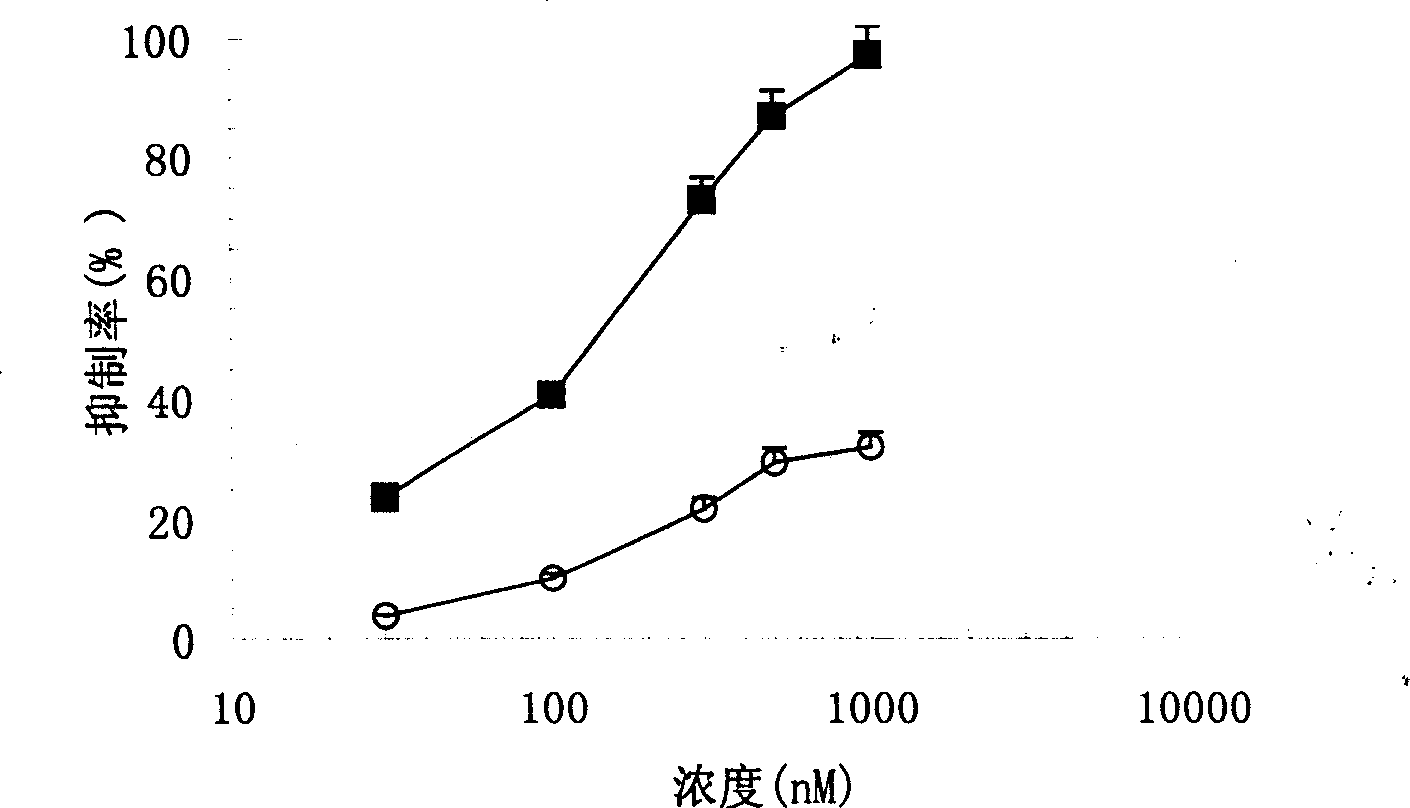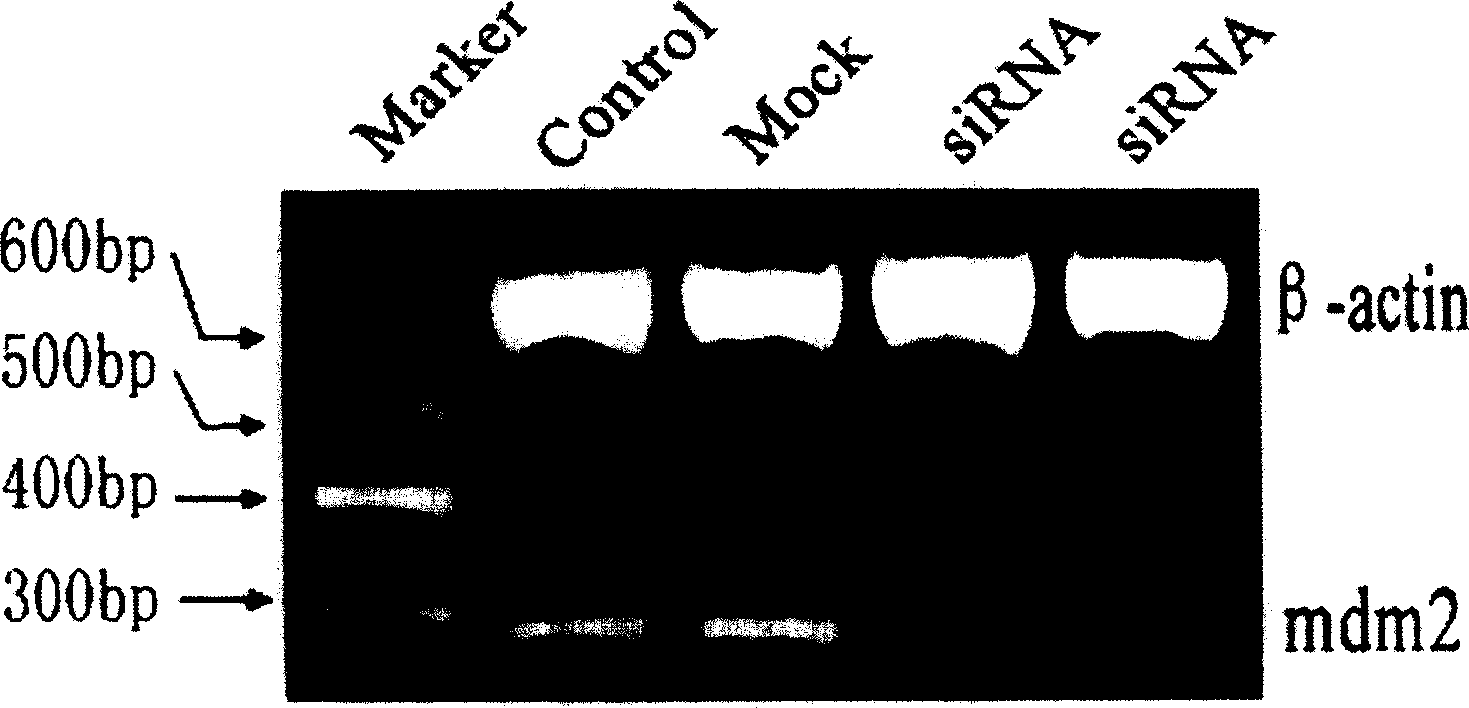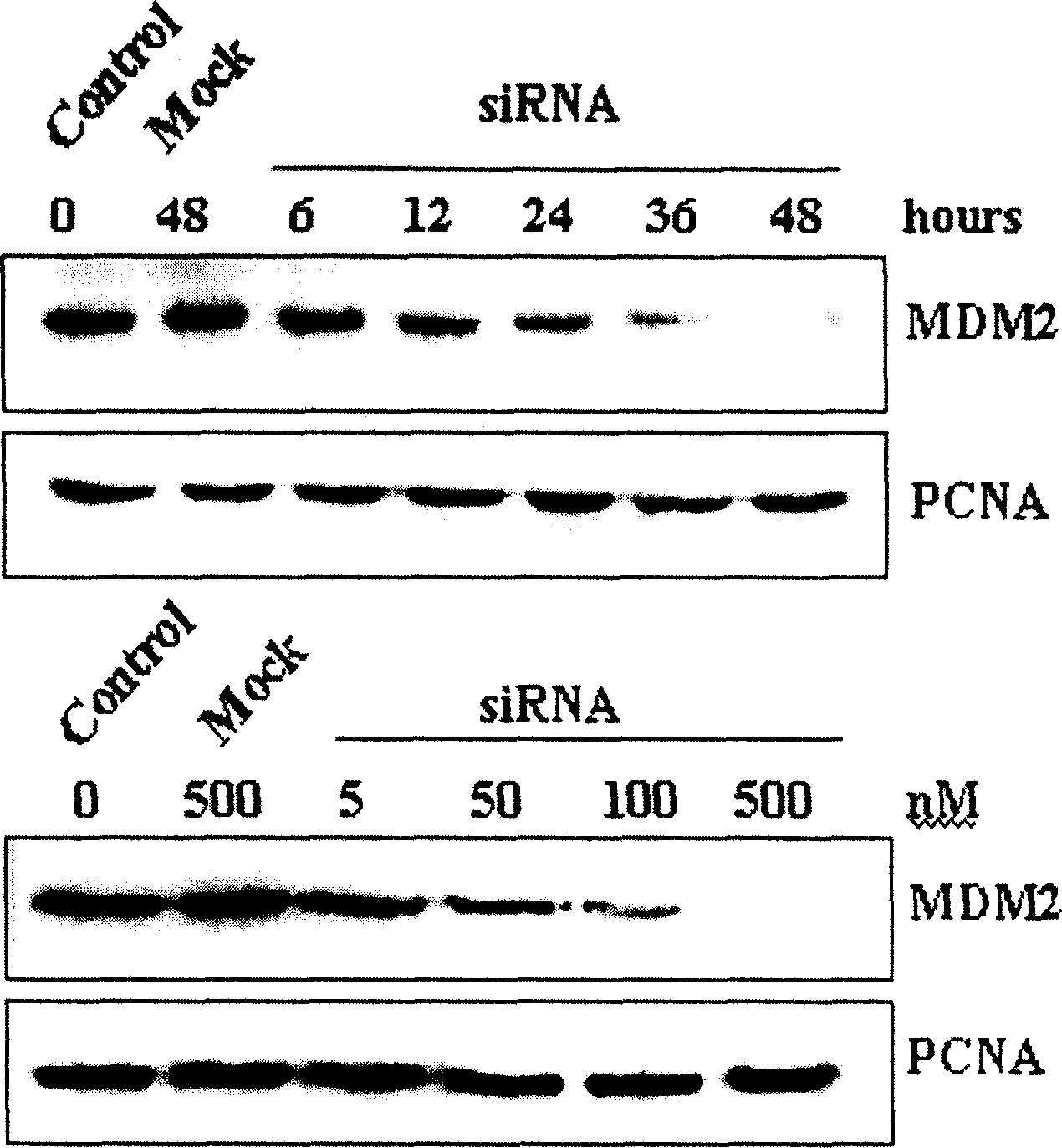Gene therapeutic drug hdm2-siRNA for breast cancer
An anti-breast cancer and drug technology, applied in gene therapy, drug combination, sugar derivatives, etc., can solve the problems of slow progress in applied research, high dosage, and insufficient specificity, and achieve the effect of wide application prospects
- Summary
- Abstract
- Description
- Claims
- Application Information
AI Technical Summary
Problems solved by technology
Method used
Image
Examples
Embodiment 1
[0036] siRNA target sequence selection
[0037] First, it may be more effective to select a 21-nucleotide target region from the sequence between 50 nucleotides downstream of the start codon and 100 nucleotides before the stop codon in the complete cDNA sequence of a specific gene (Genes and Development 2001, 15: 188-200). Since there are many regulatory protein binding sites in the 5' or 3' untranslated region and near the start codon, these sites are generally not selected. Binding proteins in the untranslated region and translation initiation complexes may affect the binding of short interfering ribonucleoprotein (short interfering Ribonucleoprotein, siRNP) and RNA-induced silencing complex (RISC) to target mRNA. The sequence used is generally a 21 nucleotide sequence whose first two are AA and the last two are TT, and the G / C content is 30%-50%. If no such sequence is contained in the cDNA, a 21 nucleotide sequence with only the first two nucleotides being AA can also be...
Embodiment 2
[0057] siRNA transfection
[0058] The present invention uses LipofectAMINE TM 2000 liposome (Life Technologies, product number: 11668-027) was used for transfection, and the silencing effect was measured 18-45 hours after transfection. The synthesized siRNA powder was dissolved in water to prepare a 4000 nM stock solution. 18-20 hours before transfection, the experimental cells were inoculated into 96-well plates at 6000-8000 cells / well in 200 μl of antibiotic-free DMEM tissue culture medium containing 10% fetal bovine serum. Dilute 4000nM siRNA to 75μl each of 120nM, 400nM, 1200nM, 2000nM, and 4000nM with Opti-MEM medium without antibiotics and serum. In another Eppendorf tube, add 5μl of liposomes to 370μl of Opti-MEM medium After incubation for 5 minutes, add 75 μl liposome diluent to each concentration of siRNA solution and mix gently. After the siRNA-liposome complex was allowed to stand at room temperature for 20 minutes, 50 μl of the siRNA-liposome complex was added...
Embodiment 3
[0060] Detecting the Inhibitory Effect of siRNA on Tumor Cell Growth by MTT Assay
[0061] Cells transfected according to the method of Example 2 were stored at 37°C, containing 5% CO 2 Incubate for about 45 hours in an incubator with air and 100% humidity. MTT was made into a 2 mg / ml solution with PBS buffer, 50 μl was added to each well, and incubated at 37°C for 4 hours to reduce MTT to Formazan. The supernatant was aspirated and 150 μl of DMSO (dimethyl sulfoxide) was added to dissolve Formazan. Measure the optical density OD of each well at 570 nm with a microplate reader (Mode13550, Bio-Rad) 570. The OD value of each test well is subtracted from the background OD value (complete medium plus MTT, no cells) or the OD value of the blank drug well (complete medium plus different dilutions of the test drug plus MTT, no cells), and each repeat The OD values of the wells were taken as mean ± SD. The survival rate of the cells is represented by T / C%, T is the OD value of ...
PUM
 Login to View More
Login to View More Abstract
Description
Claims
Application Information
 Login to View More
Login to View More - R&D
- Intellectual Property
- Life Sciences
- Materials
- Tech Scout
- Unparalleled Data Quality
- Higher Quality Content
- 60% Fewer Hallucinations
Browse by: Latest US Patents, China's latest patents, Technical Efficacy Thesaurus, Application Domain, Technology Topic, Popular Technical Reports.
© 2025 PatSnap. All rights reserved.Legal|Privacy policy|Modern Slavery Act Transparency Statement|Sitemap|About US| Contact US: help@patsnap.com



